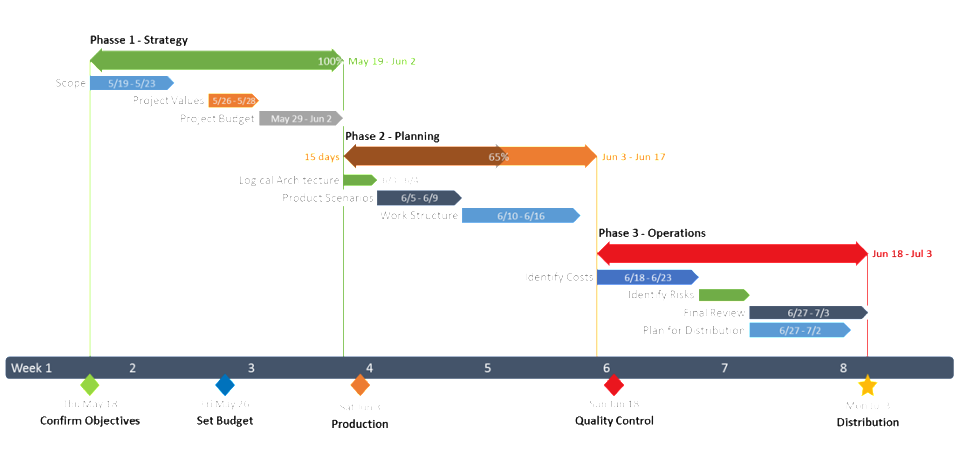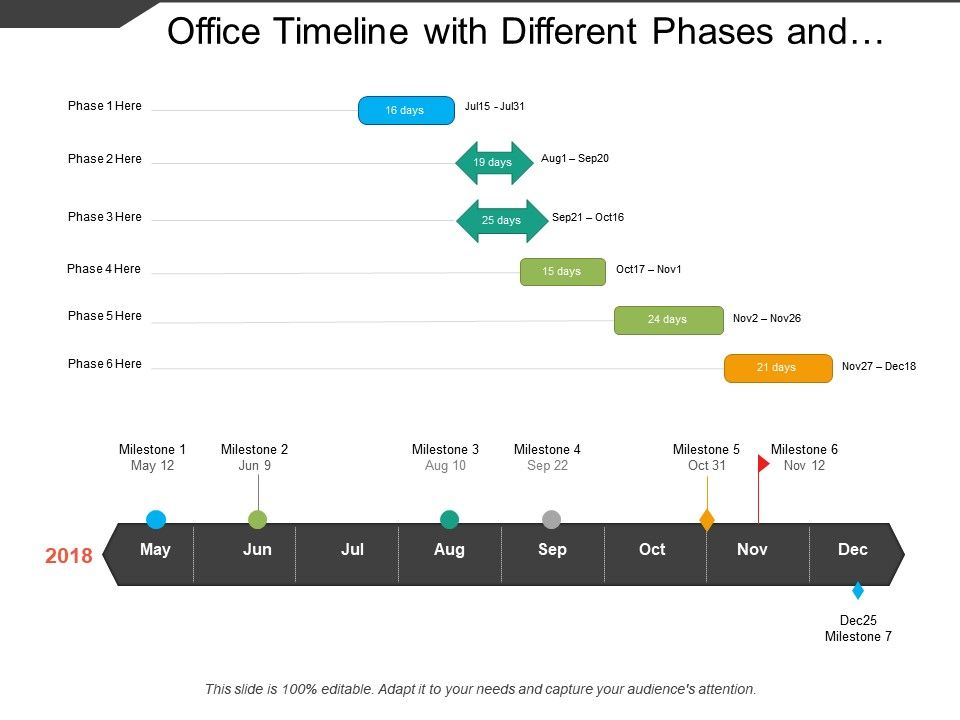
- Office Timeline is a simple but powerful PowerPoint add-in that anyone can use to quickly create impressive graphs and graphic slides. Free yourself from the tedious work of creating visual projects that are difficult to handle. The Office Timeline allows you to draw graphs in PowerPoint almost instantly.
- Office Timeline is an award winning, PowerPoint timeline maker for professionals who need a better way to make and present project plans, Gantt charts and timelines to their staff, management.
- Timeline of events prior to and during The Office. 1919 Robert Mifflin is born. 1920 Robert Dunder is born. 1925 November 1:Creed Bratton is born. 1937 June 6:Ed Truck is born. 1949 Dunder Mifflin is founded. 1951 November: Helene Beesly is born. 1958 Stanley Hudson is born. March 15: Michael Scott is born. July10:Phyllis Vance is born. Michael appears on a children's TV show,Fundle Bundle.
- A quick tutorial on how to use Office Timeline plugin for PowerPoint to create Gantt charts on your slide presentations.
Key Details
Office Timeline Pr
Office Timeline is an award-winning interactive timeline maker and project scheduler for professionals who need to build stunning visual project plans, schedules and Gantt charts. The software is especially useful for project managers, IT professionals, marketers, knowledge workers, and consultants requiring a simple but robust platform that.
Overview
30 Moorgate is an office building in the City of London EC2.
The seven-storey building will have 5th and 7th-floor terraces.
There are 40 bicycle spaces.
The nearest tube station is Moorgate.

Contact
Saville

Site & Location
Transport
TUBE
BUS
Team
Office Timeline Product Key

Timeline
Disclaimer
Information on this page is for guidance only and remains subject to change. Buildington does not sell or let this property. For more information about this property please register your interest on the original website or get in touch with the Connected Companies.
A timeline of the development of the accountancy profession in the United Kingdom. This page covers developments between 4000 B.C. to 1852, including the introduction of double-entry book-keeping to the UK and the establishment of the first accountancy firm.
| Circa 4000 B.C. | The income of temples is recorded in lower Mesopotamia. |
| Circa 1300 A.D. | Accountants are mentioned in historical records for the first time in the Statute of Westminster indicating they are considered important. |
| Circa 1327 A.D. | Early books from the commune of Genoa display an early form of bookkeeping. |
| Circa 1400 A.D. | The Italian trading period sees sophisticated accounting systems developed within banking houses. Double-entry bookkeeping is discovered. |
| 1494 | Luca Pacioli describes double-entry bookkeeping in his work Summa di Arithmetica, printed in Venice. |
| 1543 | Jan Ympyn Christoffels' work on the Venetian system of accounts entitled Nieuwe Instructie ende dewijs der looffelijcker consten des rekenboecks is printed in Antwerp. |
| 1543 | An English work by Hugh Oldcastle with the title A Profitable Treatyce called the Instrument or Boke to learn to know the good order of the keepying of the famouse reconynge called in Latyn, Dare and Habdare, and in English, Debitor and Creditor is printed in London. |
| 1547 | An English translation of Jan Ympyn Christoffels' work entitled A Notable and very excellente woorke, expressyng and declaryng the maner and forme how to kepe a boke of accomptes or reconynges...Translated..out of Frenche into Englishe is printed in Antwerp. |
| 1553 | The third book in English on double-entry bookkeeping entitled The Maner and fourme how to kepe a perfecte reconyng, after the order of...debitour and creditour by James Peele is printed in London by the King's Printer, Richard Grafton. Grafton is credited by historians for introducing double-entry book-keeping to England. |
| 1567 | A Breffe Instruction, and manner on howe to kepe, Merchants Bokes, of Accomptes, by John Weddington, is printed in Antwerp. |
| 1588 | Hugh Oldcastle's book is reproduced by John Mellis of Southwark in his work A Briefe Instruction and maner how to keepe bookes of accompts after the order of debitor and creditor. Such was the popularity of the Profitable Treatyce that it had been used by teachers until it fell to pieces and no other original copy remained. |
| 1635 | Another English work called The Merchants' Mirror: or Directions for the perfect ordering and keeping of accounts, framed by the way of Debitour and Creditour after the Italian manner, by Richard Dafforne, is printed. |
| 1683 | The first Scottish book on accountancy entitled Idea Rationaria, or the perfect accomptant, necessary for all merchants and trafficquers: containing the true forme of book-keeping, according to the Italian methode, by Robert Colinson, is printed in Edinburgh. |
| 1780 | Josiah Wade founds 'Tribe Clarke and Company' Accountancy firm in Bristol. Work mainly consists of auditing merchants' accounts. Josiah Wade is the oldest firm to trace its continuous existence. |
| 1793 | Published information records two 'accomptants' working in Bristol and another situated in Liverpool. |
| 1831 | A Bankruptcy Act is passed mentioning accountants alongside merchants and bankers as properly skilled to conduct audits. It is the first public recognition of accountants. |
| 1842 | The Relief of Insolvent Debtors Act creates a new source of labour for accountants as it requires debtors owing less than £300 to attach a statement of debts when petitioning the Bankruptcy Court. |
| Next section: 1853 - 1880 | |